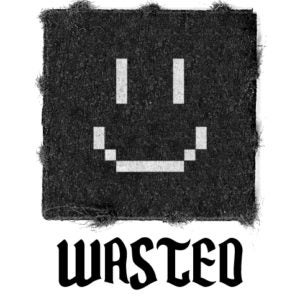 A while back, I looked into some of the more notable dry towns left in America. While there are around 500 or so still remaining, one in particular caught my eye above all others. In the last dry town on Martha’s Vineyard — a small, upscale community called Chilmark — you may not be able to buy any alcohol, but you can find a place called the Chilmark Tavern, which, confusing as it sounds, is a BYOB — “bring your own booze” — bar. Intrigued, I made the six-hour trip from New York to see what it’s like to drink at a bar where alcohol can be found aplenty, but the bar itself can’t sell a drop of the stuff.
A while back, I looked into some of the more notable dry towns left in America. While there are around 500 or so still remaining, one in particular caught my eye above all others. In the last dry town on Martha’s Vineyard — a small, upscale community called Chilmark — you may not be able to buy any alcohol, but you can find a place called the Chilmark Tavern, which, confusing as it sounds, is a BYOB — “bring your own booze” — bar. Intrigued, I made the six-hour trip from New York to see what it’s like to drink at a bar where alcohol can be found aplenty, but the bar itself can’t sell a drop of the stuff.
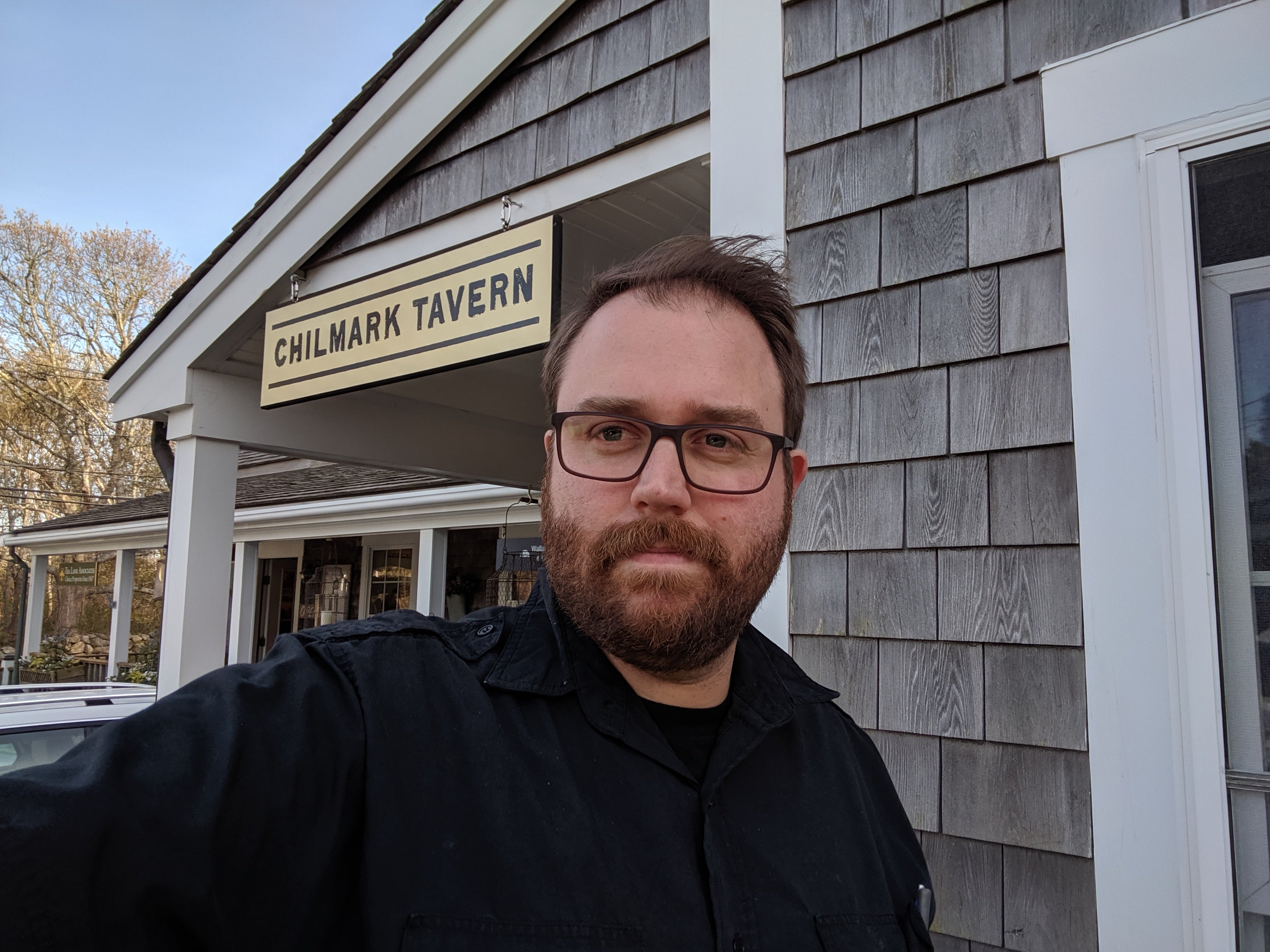
But first, what exactly is Chilmark doing being a dry town — the only dry town, in fact — on an island that has “vineyard” in the title? As it turns out, Chilmark has only had this distinction for a few years: While the town has indeed banned the sale of alcohol for more than three centuries, a number of Martha’s Vineyard towns also had these laws, but recently revoked them.
As you might imagine, much of this goes back to prohibition. Following its repeal, a great number of Massachusetts towns opted to stay dry, so the availability of booze in the state was spotty. What defined “dry” would vary as well: In Chilmark, it simply means you can’t sell alcohol, but you can drink it all you like. Over time, the towns where alcohol was banned in some way would figure out that those neighboring “wet” towns got all the tax revenue from booze sales, so little by little, towns overturned their laws to reap the financial benefits.
While Martha’s Vineyard is a popular tourist destination, the actual population of many of the towns is small — Chilmark’s 2010 census was just 866 — which means people tend to get very involved in the local politics. For example, just three years ago, the town voted down a referendum to allow alcohol sales, with just 93 votes in favor of booze and 162 against. And though it sounds like a pain in the ass to not be able to buy booze where you live, the quirky, singular nature of their situation has only made most Chilmark locals more attached to it.
But enough history: It’s time to see the place for myself. To make sure I’m prepared, I call the tavern ahead of time to see what kind of booze I should bring with me. Normally, all I drink is beer and whiskey (either with club soda or on the rocks), but Jenna Petersiel, the owner of Chilmark Tavern, advises me to bring along some gin. She also tells me to perhaps get some nips instead of full-size bottles — that way, she very reasonably points out, I won’t be driving around afterwards with an open container, which was something I hadn’t even thought about.
Now, for the most part, you’ll only want to bring as much booze as you can drink, although I found out later that many of the regulars live within walking distance and the tavern offers “Liquor Lockers” where you can pay to store your booze. There’s only 12 of them, though, and they’ll run you $375 to rent for the season, so unless you’re bringing beer that you can open one bottle at a time, you’ll probably not want to bring more booze than you plan on drinking.
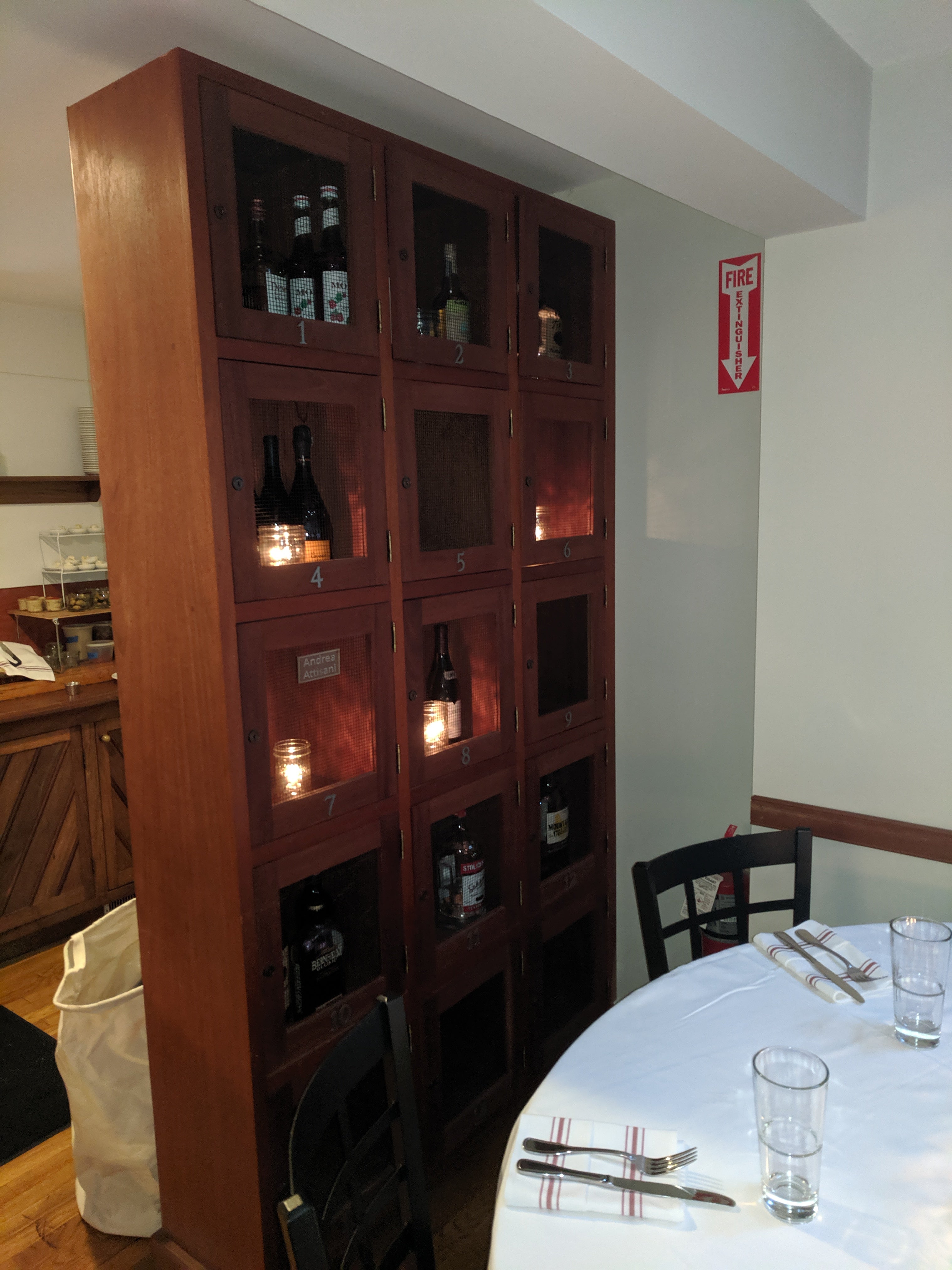
On my drive up, I get a couple of tiny bottles of gin and a bit of Jameson in case I decide to resort to my own standby. I arrive at Woods Hole, Massachusetts (the 15-year-old in finds the name hilarious, naturally), then take the ferry to Martha’s Vineyard and an Uber to the Chilmark Tavern — a modest building, fitting in well with the quietly affluent yet rustic look of this area of the island.
For a BYOB joint in a dry town, I’m expecting something pretty basic inside — maybe even some sawdust on the floor, or a shady speakeasy-type of place where I have to place my drink order in code — but upon walking inside, I discover that it’s closer to a nice small-town restaurant than a last-chance saloon. There’s 20 or so tables and the bar seats a further 10. Most of the crowd are married couples on dates, and there’s even a scattering of families — it’s clearly a place where everyone knows each other, full of loud, happy conversations between people who have been friends for years.
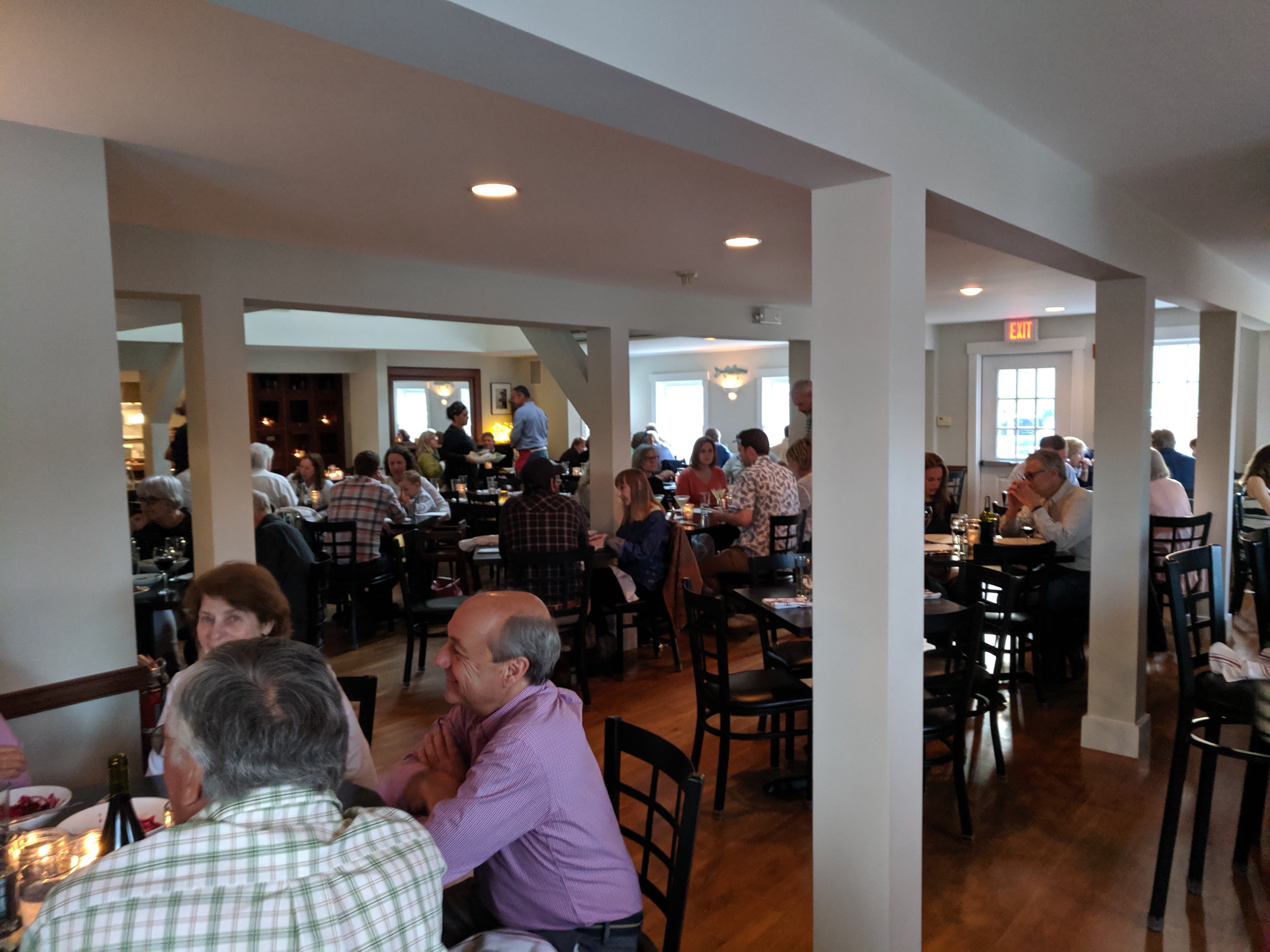
Walking in with my brown paper bag full of nips definitely feels as though I’m doing something wrong, like I’m disguising my store-bought popcorn and sneaking it into a movie theater. Petersiel tells me that this feeling is fairly common among her patrons: “Some people are super shy about bringing in their bottles and they hide it under their jacket or their shirt, while others come in flailing a bottle — I guess it depends on your personality.” As several of the regulars will tell me later, it all becomes normal after a while.
As I arrive, I’m warmly greeted by Petersiel, and since I’m flying solo, I park my ass at the bar and look at the drink menu — a drink menu that’s completely devoid of drinks. Instead, you pay for the other ingredients and/or the service surrounding the drink. A handful of house mixed drinks are on offer, for which you pay around $10. Some are house staples — their signature drink being the Basil Lime Martini — while others rotate according to what fresh fruits are available on the island. For those requiring syrup, Petersiel herself makes them by finding recipes online and gathering up the necessary local fruits and herbs. Again, though, any booze that’s added to them will be the booze you brought with you.
For beer and wine, you’re paying for the service surrounding the drink. So for a beer, it’s $2 for a chilled glass. For the wine, it’s a $14 corking fee per bottle. Where you keep the bottle is up to you. For those seated at the bar like me, we just place our bottles in front of us. With table service, they offer a few different options: For wine, there’s an ice bucket, which can be brought to the table, but there’s also a communal wash tub full of ice near the bar for patrons to keep their stuff cold while they dine. Petersiel often laughs at the wide selection of what people bring in, as she’ll see bottles of wine that may be worth $3,000 chilling next to a can of Bud Light.
In the washtub and at the bar, everything is labeled with a sticker so that the servers ensure everyone is getting their own booze and not someone else’s. There are also some shelves behind the bar to put bottles that don’t need refrigeration. Some nights, Petersiel says that these shelves will be full like any other bar, the only difference being that they’ll be clear by the end of the night and they can’t sell a drop of it. Instead, you’ll be charged $3 for a glass of ice.
While I’m not normally a fruity drink fan, I want the full Chilmark Tavern experience, so I start with the Strawberry Rhubarb Soda, made from rhubarb and blackberries grown on the island. I hand off my first bottle of gin to the bartender, Eliska, who’s been with the tavern since it opened in 2010. It’s weird to watch servers handling alcohol they’re not allowed to sell, another reminder that the entire concept of the dry town makes no sense. As Pertersiel explains, besides not being allowed to sell alcohol, there aren’t really any other laws about booze on the books — even walking around with open containers outdoors is fine here.
Speaking to a few regulars, it becomes clear that Chilmark’s dryness is a regular topic of discussion. Wendy, who works for the town zoning board and describes the tavern as her and her husband’s “go-to” place, says that she’d like to see the law change so that the Chilmark Tavern could benefit from it. Her husband James, a colorful local who preaches the wisdom of George Carlin and Hunter S. Thompson, enthusiastically blames the whole political process for Chilmark’s antiquated view on alcohol: “I fucking hate politics. All of it.”
Todd, who owns the nearby Chilmark Coffee Company, tells me that the people voted down alcohol sales because they were afraid the nature of the town would change. He cites Vineyard Haven, a neighboring town that repealed its anti-alcohol laws two years ago, as an example of why they’re wrong: “In Vineyard Haven, so many people were afraid it would affect the ‘character’ of the town. They thought there would be crime and drunks in the street and literally none of that happened.” In fact, the town even experienced something of a revival thanks to the change. When I ask Todd and his wife, Jenny, who works for the town of Chilmark, if they thought making Chilmark wet would dramatically change the well-to-do neighborhood, Jenny agrees that it could, while Todd vigorously shakes his head “no.”
The Chilmark Tavern itself is a big reason many still want the ban lifted. “I’d love it if I didn’t have to bring my own drink here, and I’d love Jenna [Petersiel] to be able to make some money off of it,” Todd says. Petersiel adds that she doesn’t fear competition from new bars if the laws change, since any new laws around alcohol (and the existing zoning laws) could easily restrict more bars from coming into the town. This has been the case in Vineyard Haven — no bars or liquor stores have opened, their restaurants can simply make a buck off of booze now.
The tavern only reopened for the season the day before my arrival — on May 17th — and the people here tonight are locals who live here year round, since the tourist season hasn’t really started yet. But even when it’s in full swing, Chilmark isn’t exactly the hottest spot on the island: It’s about a half hour to the west from the port towns on the east end of the island that are most popular with younger visitors. For the most part, Chilmarks’ summer population will just inflate with wealthy people who have a second home there — beyond that, they’ll get some people passing through to see the cliffs on the west end of the island, but mostly it’s a small community where everyone knows everyone else.
“No one’s coming out to Chilmark to get a drink,” Petersiel admits. That said, Eliska tells me that newcomers sometimes do wander in and are often taken aback by the BYOB policy. “They come in and look confused for a second, because they see alcohol everywhere and yet none for sale.” It doesn’t help that the nearest liquor store is in a town about 20 minutes away (Petersiel says that literally every liquor store on Martha’s Vineyard delivers, but they really only deliver directly to the tavern for big parties).
By now, my Strawberry Rhubarb is long gone, so I decide to try the tavern’s signature drink, the Basil Lime Martini, which is surprisingly delicious, and a burger, the latter of which wasn’t entirely by choice: Ordering food is actually required at the Chilmark Tavern. “You can’t just come in and get a drink, you have to have dinner. That’s our own rule,” Petersiel states. “We don’t want to be a bar. We want to be a restaurant that serves drinks.”
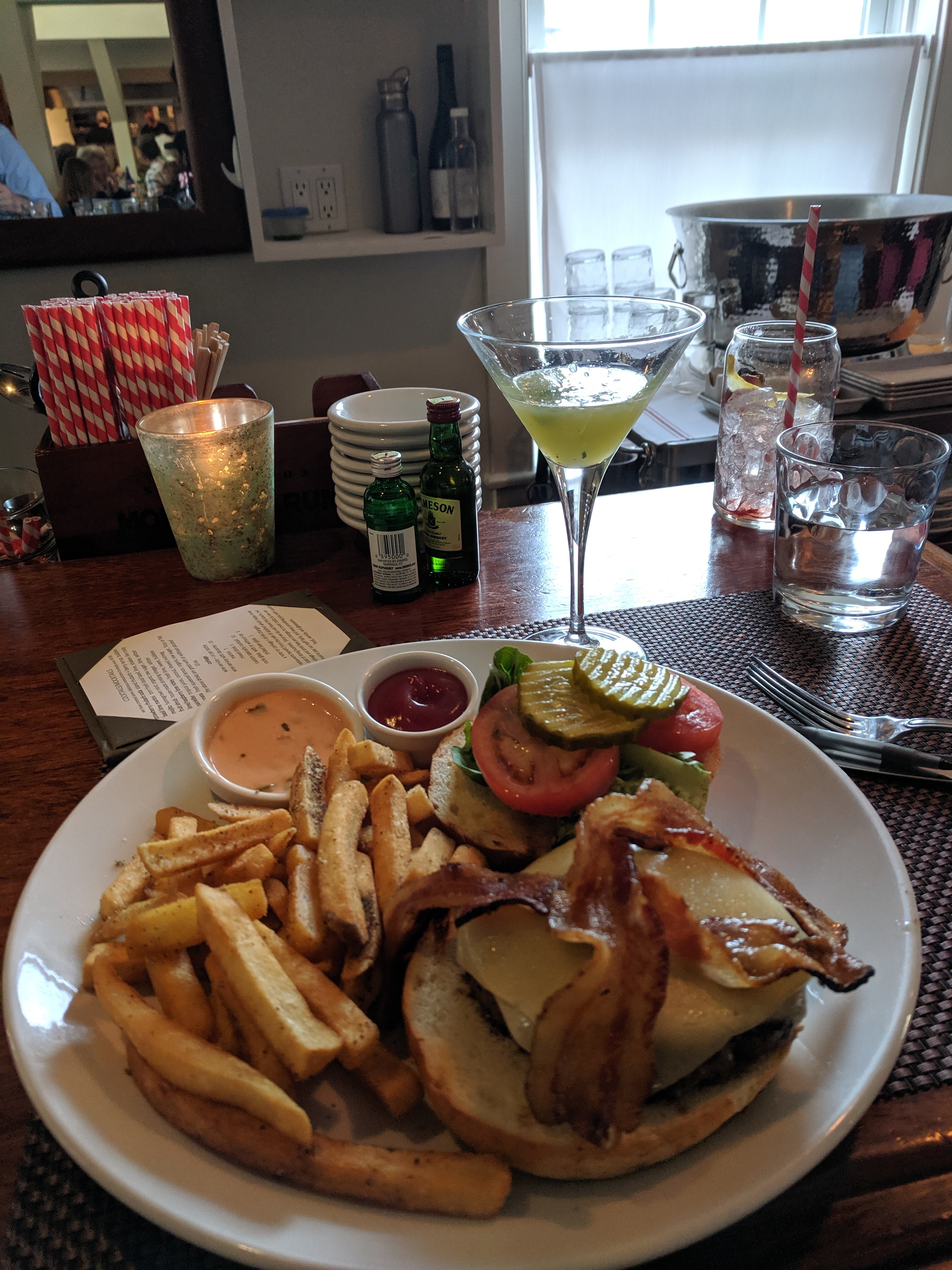
As the night draws to a close, Todd offers me his last beer as he leaves, and when I order my Uber only to discover it’s unlikely to get me to the 9:30 ferry (the last one of the evening), Wendy offers up her home for the night if I don’t make it (“We’re always looking for new victims,” says James, cackling wildly).
Fortunately I make it to the docks in time, leaving the Chilmark about a half hour before it closes. Despite the adjustment period and the preparation required, the BYOB aspect of the bar seemed pretty normal by my third drink. Honestly, what sticks with me the most from the whole experience is how silly the concept of the “dry town” is. People are already drinking as much as they like, and they’re carrying bottles of alcohol with them every time they go to their local hangout — what exactly are they hoping to preserve? Like so many things done in the name of tradition, they’re doing it for the sake of doing it, even though it’s actively affecting their quality of life.
Or as Chilmark Tavern regular James puts it: “What the hell, you Goddamn puritans! Let me drink!”

